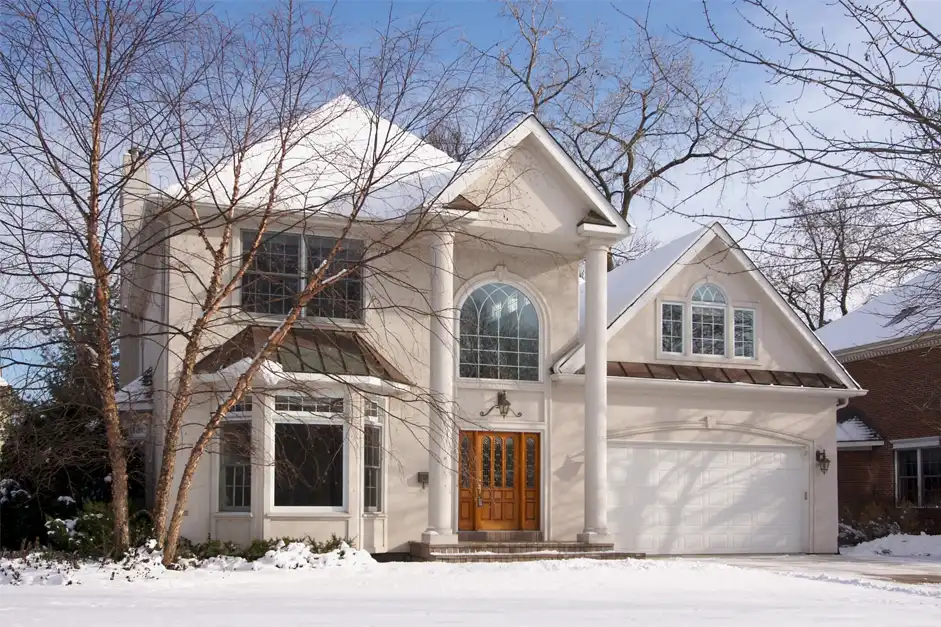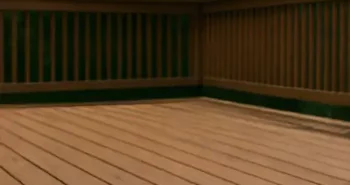Quick Overview: Essential Winter Home Maintenance Tasks
Preparing your home for winter helps prevent costly repairs and keeps your family safe during freezing months. A seasonal checklist ensures no critical task gets overlooked.
- Inspect your roof and gutters to stop leaks and ice dams
- Seal windows, doors, and add insulation to keep heat inside
- Service your heating system and protect plumbing from freezing
- Test safety devices like smoke and carbon monoxide detectors
Staying ahead of winter maintenance gives you peace of mind and protects your home all season long.
Cold weather puts your home to the test. A small crack, a clogged gutter, or a worn furnace part can quickly become a serious problem once freezing temperatures arrive. Taking a little time to prepare now saves you from costly repairs and keeps your house safe through the toughest months.
The goal of winter maintenance isn’t just comfort—it’s protection. A well-kept roof keeps the weather out, clear gutters prevent water damage, and a serviced furnace keeps the heat running. These small steps lower energy bills and help you avoid stressful mid-winter emergencies. This checklist covers the most important steps to get your home ready before the first snow falls.
Inspect Your Roof Before the First Snow
A damaged roof is the fastest way to let cold, water, and pests into your home. Walk around your house and check for missing shingles, loose flashing, or sagging areas. Even a small gap can turn into a leak once ice and snow pile up. If you’re not comfortable climbing up, schedule a roof inspection from a professional. Roof inspections take less than an hour but can prevent months of frustration and repair bills. You can also learn about the basics of a home roofing system to better understand how to spot warning signs.
Clean and Protect Your Gutters
Clogged gutters can turn melting snow into a nightmare. When water has nowhere to go, it backs up under shingles and seeps into walls, causing rot and mold. Before freezing temperatures hit, clean out leaves and debris, then run water through the downspouts to make sure they’re flowing. Adding gutter guards can keep you from doing this job over and over again. If you skip this step, you risk ice dams forming that can destroy both your roof and your siding. Homeowners considering a permanent solution can explore the different types of gutter guards available.
Seal Windows and Doors Against Drafts
A drafty window can waste more heat than you think. Check the edges of your windows and doors for cracks, gaps, or worn-out weatherstripping. Use caulk or foam sealant to fill cracks, and replace brittle weatherstripping with new material. These small fixes can cut heating costs while keeping your home cozy. Adding heavy curtains or draft stoppers is another simple way to keep warm air inside. For a deeper dive on sealing air leaks and making your home tighter, see the U.S. Department of Energy’s guide on air sealing your home.
Service Your Heating System Early
The worst time for your furnace to fail is the middle of a cold snap. Schedule a professional tune-up before winter begins to make sure your system runs efficiently. Replace filters, clean vents, and check your thermostat settings. A small investment in maintenance now prevents emergency repairs later. Many HVAC companies offer discounted seasonal checkups, making this step even more affordable. The ENERGY STAR Maintenance Checklist gives a good baseline for what a proper heating and cooling inspection should include.
Protect Your Plumbing From Freezing
A burst pipe can cause thousands of dollars in damage overnight. Insulate exposed pipes in unheated areas like basements, garages, and crawlspaces. Disconnect and drain outdoor hoses, and shut off exterior faucets. On extremely cold nights, let a faucet drip slightly to keep water moving and reduce the risk of freezing. You can also open cabinet doors under sinks to allow warm air to reach hidden pipes.
Check Your Attic and Insulation
Poor insulation is like leaving your windows wide open. Go into your attic and look for thin or uneven insulation, damp spots, or signs of pests. Adding extra insulation keeps heat in, reduces strain on your furnace, and prevents ice dams from forming on your roof. If you’re unsure whether you have enough, energy audits can reveal exactly where heat is escaping.
Test Smoke and Carbon Monoxide Detectors
Winter brings more indoor heating, fireplaces, and candles—all fire and carbon monoxide risks. Test every smoke and CO detector in your home, replace batteries, and make sure you have enough units installed. These devices are your first line of defense in an emergency. Experts recommend testing detectors monthly and replacing units every 7–10 years.
Prepare Your Fireplace and Chimney
A dirty chimney can turn a cozy fire into a safety hazard. Have your chimney cleaned and inspected before you start using your fireplace regularly. Look for cracks in the mortar, birds’ nests, or blockages that could cause smoke to back up into your home. Store firewood at least 20 feet away from the house to avoid pests. Creosote buildup is one of the leading causes of chimney fires, so annual cleanings are critical.
Stock Up on Winter Supplies
Being unprepared in a winter storm is more stressful than it has to be. Keep a supply of ice melt, sand, shovels, and warm blankets on hand. If you have a generator, test it now and store fuel safely. Preparing early means you won’t be scrambling when bad weather arrives. A basic emergency kit with food, water, and flashlights also provides peace of mind. For homeowners in snowy climates, consider reviewing how snow and ice affect a roofing system and keep proper tools handy. You can also explore a winter weather guide from the Insurance Institute for Business & Home Safety for expert tips on preparing your home.
Inspect Exterior Walls and Siding
Cracks in your siding let in cold air and water, which can freeze and expand, making the problem worse. Walk around your home and look for warping, cracks, or missing panels. Seal small gaps with exterior caulk and schedule professional repairs if you spot major damage. Keeping your siding in good shape also improves your home’s curb appeal through the winter months. To get the best results, follow these tips on caring for siding during winter.
Don’t Forget Outdoor Spaces
Neglecting your outdoor areas can shorten their lifespan. Cover or store patio furniture, clean and protect your deck, and trim back tree branches that could break under heavy snow. Outdoor preparation makes spring cleanup much easier. These steps also protect your landscaping and prevent damage to fences or outbuildings.
Final Thoughts: Stay Ahead of Winter Damage
A good winter maintenance checklist is about more than comfort—it’s about protecting one of your biggest investments. By addressing your roof, gutters, heating system, and plumbing before the first freeze, you avoid emergencies and keep your family safe.
At First Star Exteriors, we believe preparing your home for winter should feel like a partnership, not just another project. As a family-owned and operated company with over 25 years of experience, we take pride in treating every house like it’s our own. Our team of professional contractors is committed to listening, advising, and delivering solutions that put your needs first. Whether it’s roof repairs, storm damage restoration, gutter protection, or siding maintenance, you can trust us to provide reliable service with a personal touch. Contact us today to schedule your winter maintenance and receive a free, no-obligation quote within 48 hours.





